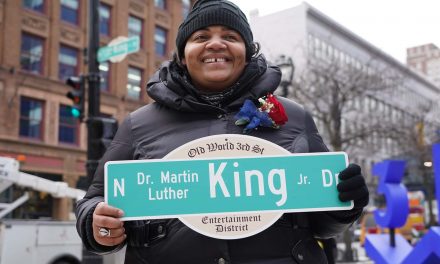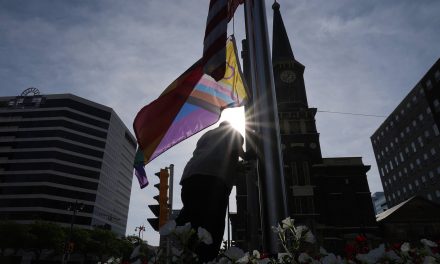
“The United States must vastly improve the educational outcomes for this new and diverse majority of American students, whose success is inextricably linked to the well-being of the nation.” – Education Week Magazine
The 2014-15 school year marked the first time that non-white student enrollment in public schools surpassed that of White students. Babies of color (1-years-old and younger) now outnumber their White peers in the U.S.
America is a nation of 330 million individuals that we lump into several groups we call races or ethnicities. The categories have changed a lot over time as each decennial census has been completed since the first one in 1790. The roll that race plays in schools is critical for us to understand our current circumstances. When more than two dozen states passed laws segregating children of color from their White peers, it limited their access to first class education. It was not because they needed White classmates to succeed. Many of them did really well in segregated schools.
The issue was that the resources and pay for teachers of color was not equal to the resources allocated and pay of White teachers at all-White schools. Parents of these children of color paid taxes to support the schools their children attended but also the schools that prohibited their children. These separate schools for students of color were never even close to being funded the same as schools for White students. Even today, in big cities around the country, schools are funded by property tax revenue. The suburban and exurban schools don’t have to pay nearly the same for transportation, benefits for retired educators and the cost of old school buildings which are exceptionally expensive to maintain. Because of decades of housing discrimination, homes in mostly white suburbs gained a tremendous amount of value over time while those in central cities grew in value at a glacial pace.
Defining race was a critical component of how states determined which schools you could legally attend. In order to enforce segregated schools they had to define each racial group. The federal government created racial categories in the first decennial census in 1790. The following background comes from an article written by Joseph Ahern at the Center for Community Solutions using information from Karen Humes’ and Howard Hogan’s article, Measurement of Race and Ethnicity in a Changing, Multicultural America” in the Race and Social Problems Journal.
The first three censuses had three race categories: “free whites,” “all other free persons” and “slaves.” In 1820 through 1840 the category “free colored persons” was added to the previous three. The term “mulatto,” meaning one Black and one White parent, was added in 1850. The federal government decided to count Native Americans who lived away from their tribal groups for the first time in 1860.
Ten years later, in 1870, the racial categories on the national census were “White,” “Black,” “mulatto,” “Indian” and “Chinese.” The categories did not change in 1880. By 1890 Japanese was added and all Native Americans were counted regardless of where they lived. On that census, the categories of “quadroon” (one-fourth Black) and “octoroon” (one-eighth Black) were used, in addition to “mulatto.” In the first census of the twentieth century in 1900, the terms “mulatto,” “quadroon” and “octoroon” were dropped and replaced by “Black” (Negro or Negro descent).
In 1910 “mulatto” returned again and the Black category was changed again to “Black (Negro).” “Other race” was added to the racial categories. By 1920 the categories expanded to include “Korean,” “Filipino,” and “Hindu.” In 1930, “mulatto” disappeared again but census takers were told to include anyone with any discernible trace of “black blood” as Negro (the infamous one drop rule). “Mexican” was added as a separate category changing the previous rule counting all Mexicans as white.
In 1940 the “Mexican” category was removed again and Mexicans were once again counted as white. The 1950 categories dropped “Korean,” “Hindu,” and Native Americans were subsequently called “American Indians” to separate them from Asian Indians.
A huge shift took place in 1960 when the Census Bureau allowed people to self identify their race, taking that power away from census takers. “Eskimo,” “Aleut,” “Hawaiian,” and “part-Hawaiian” were added as new racial categories. In 1970 the ethnicity question was added allowing people of “Mexican,” “Puerto Rican,” “Cuban,” “Central or South American,” and “other Spanish-speaking heritage to be included. “White,” “Negro or Black,” “Indian (American),” “Chinese,” “Japanese,” “Filipino,” “Korean,” “Hawaiian ,and other” were the categories in 1970. More changes were forthcoming in 1980.
“After being absent from the 1970 Census (when they were grouped with American Indian), the Eskimo and Aleut categories returned. “Vietnamese” and “Asian Indian” were introduced, as well as “Guamanian” and “Samoan.” The Hispanic categories were changed slightly to “Mexican, Mexican-American, Chicano,” “Puerto Rican,” “Cuban” and “other Spanish/ Hispanic.” In addition, a new open-ended question was added to allow people to list their ancestry or nationality.”
“Other Asian/ Pacific Islander” was added in 1990. People were allowed to self report as more than one race in 2000 for the first time. The categories in both 2000 and 2010 were “White,” “Black, African American, or Negro” “American Indian or Alaska Native,” “Chinese,” “Japanese,” “Korean,” “Filipino,” “Vietnamese,” “Asian Indian,” “other Asian,” “Native Hawaiian,” “Guamanian or Chamorro,” “Samoan,” “other Pacific Islander,” and “some other race.”
In 2020 the census included the racial categories of “White,” “Black or African American,” “American Indian or Alaska Native,” “Asian,” “Native Hawaiian and Pacific Islander,” and “some other race.”
The only common thread in all of this history is the category of white. It has been used on every decennial census in U.S. history. In essence, the racial category white has been given a special place in America. All other people have had no control over what they are called. When we think of the socially constructed concept of “race” this tells us just how unreal it is. At the whim of some government officials your racial category can simply appear or disappear.
What does this have to do with education? Our educational environment has been built around a concept of “race” which has determined who could and could not gain access to high quality, well funded education. Our education and educational outcomes are often compared by “race.”
This is problematic in many ways but there is some value in it as well. The disparities in how our educational system works can only be clearly seen by disaggregating the data by race. The dangers of using race is that we begin to believe our so-called “race” determines our intellectual capacities.
In 1994, psychologist Richard J. Herrnstein and political scientist Charles Murray wrote the infamous book, The Bell Curve: Intelligence and Class Structure in American Life. They argued that our IQ’s are determined by our race and that the reason White people do better than Blacks is because they have higher IQs than Black people.
The book was funded by Milwaukee’s Bradley Foundation. They paid Murray $1 million to write the book according to multiple reports. They had been paying him $100,000 per year as he worked at the American Heritage Institute according to the Milwaukee Journal. Back in 1995, Robert Lowe, associate professor at National Louis University and an editor of the journal Rethinking Schools said this about the book:
“The Bell Curve is a smoking gun. It maintains that the poor — including the majority of African Americans — are generally incapable of benefiting from education…”
These debates continue to this day. We ignore the fact that race is a social construct. The makers of the documentary Race the Power of an Illusion tell us that:
“Racial and ethnic groups are not an inherent feature of human society, but constructed in different ways that vary according to time, place, and political interests. Mutable and fluid, the history of racial categories reflects not melanin or nationality, but power.”
It is exceptionally hard for Americans to believe race is not real because it has been a foundational principle in this nation since the colonial period. The documentarians further tell us that, “As African slavery increased, lower class Europeans won new rights and opportunities, as well as payoffs and status-enhancements, leading to their identifying as ‘white.’”
Race is not real but it has real consequences. The fact that different states over time had different definitions for what made you Black is instructive. In 1950 Pauli Murray catalogued the various definitions in a book called States’ Laws on Race and Color.
Race was an important indicator of your educational experiences across the country but most pronounced in the South. The separate schools for White children and students of color had to be set in law by defining these racial groups.
In Alabama, the 1901 State Constitution created a system that ruled “separate schools shall be provided for white and colored children and no child of either race shall be permitted to attend a school of the other race.” In 1940 the state, in their Code of Alabama defined Negro in this way.
“The word “negro” includes mulatto. The word “mulatto” or the term “person of color” means a person of mixed blood descended on the part of the father or mother from negro ancestors, without reference to or limit of time or number of generations.”
Other examples include: Texas in 1947, (The term “Negro” as used herein includes every person of African descent); Florida in 1920, (The words “negro,” “colored,” “colored persons,” “mulatto,” or “persons of color,” when applied to persons include every person having one-eighth or more African or negro blood); Arkansas in 1911, (Person of negro race are any person who has in his or her veins any negro blood whatever); Mississippi in 1917, (A person having one-eight or more negro blood); North Carolina in 1947, (A person of Negro descent to the third generation); North Dakota in 1909, (Every person who shall have one-eight or more negro blood shall be deemed and held to be a colored person or negro); Oklahoma in 1907, (The word or words “colored” or “colored race,” “negro,” “negro race”…shall be construed to or apply to all persons of African descent); Georgia in 1927, (All Negroes, mulattoes, mestizos, and their descendants, having any ascertainable trace of either Negro or African, West African, or Asiatic Indian blood in their veins and all descendants of of any person having either Negro of African, West Indian, or Asiatic Indian blood in his or her veins shall be known in this State as persons of color).
You could literally cross state borders and be Black in one state but not Black in the other state. These ridiculous definitions upend the old myth of the one-drop rule. The states decided what their own individual rule would be. Many changed these definitions over time the same as the Census Bureau constantly changed racial categories.
So when it came time to decide who was or was not allowed to attend the “good” schools was determined by an arbitrary definition in law. Jim Crow era laws created separate and certainly not equal schools. I found 1950s images online of schools in Tallahatchie County, Mississippi where my hometown is. One image shows the all-white high school and the other shows the all-black high school. In the library of the all-white school, every row of the bookshelves along the wall were full of books. In the library in the black school there were seven rows but just one row had any books on it. The other six rows were completely devoid of books. These are the schools my older family members attended.
In 1947 the parents of Sylvia Mendez challenged the segregated schools which denied her admittance in California. Her father, Gonzalo Mendez sued the schools. The case went all the way to the California Supreme Court. In the first decision of its kind in the nation, the court ruled that the segregated schools in California were unconstitutional. Earlier, while the case was being appealed in lower courts, Thurgood Marshall of the NAACP connected with the attorneys and family of Sylvia Mendez. The argument in Mendez would be the same argument he would make years later in the famous Brown v. Board case.
When the 1954 Brown v. Board decision came down from the U.S. Supreme Court, Mississippi like many other states, said “we will not integrate our schools.” The pushback to the Brown decision was swift. It was described as Massive Resistance.
“If we can organize the Southern States for massive resistance to this order, I think that in time the rest of the country will realize that racial integration is not going to be accepted in the South.” – Harry Byrd, United States Senator from Virginia (February 1956)
Contrary to what most of us believe, these separate schools were not just mandated by law in the old Confederate states. A 1923 law in New Mexico said that in schools, “separate rooms be provided for the teachings of pupils of African descent, and said rooms are so provided, such pupils may not be admitted to the school rooms occupied and used by pupils of Caucasian or other descent.”
One of the more interesting things about the famous Brown v. Board case is that it should have never been called by that name. It was a class action that included multiple cases from around the country challenging segregated schools. The Brown case was filed by the parents of Linda Brown from Topeka, Kansas. Normally a class action suit will be given the name of the plaintiff whose name comes first alphabetically.
There was a case in the class from Clarendon County, South Carolina, Briggs v. Elliott. In Clarendon County, Blacks outnumbered Whites 23,000 to 8,000. Despite this, the funding for White schools was significantly more than for Black schools. The 6,351 Black students were afforded $282,950 while the 2,375 White students were given $395,329. This was $166 per White student and just $43 for each Black student.
The Briggs suit was brought by Harry Briggs, a Black parent who sued R.W. Elliott, the president of the school board for Clarendon County. He initially asked the district to provide buses for Black children the same as they did for White children. The school board refused that request. Briggs’ pastor Reverend J. A. DeLaine, a school principal, contacted attorneys at the NAACP. Thurgood Marshall, lead counsel for the NAACP Legal Defense Fund, Inc., and Harold Boulware from Clarendon County, filed the Briggs v. Elliott lawsuit in 1950. They directly challenged the county with providing physically unequal schools for Black children. The school district readily admitted that they were right on that point and said they were constructing new schools for Black students.
So why then did the Briggs case not become the name of the class action lawsuit? The NAACP attorneys and Supreme Court Justices agreed to look at the cases from the perspective of segregated schooling being connected to the psychological damage done to Black children being in segregated schools just like the argument in Mendez said damage was done to Mexican children. They brought psychologists Kenneth Clark and his wife Mamie Clark onboard to provide testimony about a doll study they had done. The Clarks eventually testified along with some of the most well known social scientist in the country as to the nature of this psychological damage.
The doll study was controversial. Robert L. Carter of the NAACP asked Clark “whether psychologists had any findings which were relevant to the effects of racial segregation on the personality development of Negro children.” The studies showing that Black children preferred White dolls over Black dolls was not designed to determine the effects of school segregation on Black children. They had simply intended to show that Black children are negatively impacted by life in a very strongly segregated and prejudiced society. There were differences between Black children in the South versus those from other parts of the country when they did the doll studies.
Because of this, Clark would later be heavily criticized for drawing the conclusions he did. Clark was convinced that once Black children became aware of racial differences they would suffer psychological harm and lose a sense of self esteem and confidence. He would later write that, “the findings might suggest that northern Negro children suffer more personality damage from racial prejudice and discrimination than southern Negro Children.” Clark testified in court that segregated schools damage the psyche of Black children.
This argument was different from the one made in the Briggs case. Briggs argued that Clarendon County had intentionally spent less on education for Black children than on education for White children. That argument, if used in the U.S. Supreme Court, would have fundamentally changed the fight against segregated schools by holding specific persons and school districts as well as states accountable for this inequity. The other cases simply claimed psychological damage in a general way and no one person or school district or state would be liable and held accountable for creating and maintaining segregated schools.
This was huge because the remedy moving forward would be different. If the argument in the Briggs case had been the focus, all of those districts would have been held responsible for providing equal funding for the black schools and white schools. This is important because the Black parents in these cases had never asked for integrated schools. In fact, the parents of Linda Brown, the lead plaintiff, said the school she attended was phenomenal. They simply wanted the law to change so that she would not be forced to attend a school much further away simply because it was the “black school.” They wanted to choose for themselves where she could go to school. They would have preferred she keep attending the school she was at because the Black teachers and administrators were outstanding educators.
Unfortunately, because of the Warren Court ruling that schools should be desegregated with “all deliberate speed” in the second phase of the case, the people who’d created the segregated schools were given the ability to determine the solution but also the timeline for change. They closed school districts down completely for years in some places to fight the Brown decision. In the most tragic irony of the Brown case, tens of thousands of Black teachers saw their schools shut down and lost their jobs permanently because the formerly all-white schools would not hire them to teach White children. Those wonderful Black educators who did the best they could with limited resources, who pursued excellence for their students would be lost to generations of Black children. They had to move out of the South to continue their careers. Very few eventually found work in the integrated schools in the South.
It was not until the late 1960s before Mississippi was finally forced to integrate under the orders of a federal judge. I attended school with White classmates in Mississippi in second grade. When we moved to Milwaukee in 1973 all of my classmates from 3rd through 8th grade were Black. It was not until I caught the city bus to the south side to attend Milwaukee Tech for high school that I had a White classmate in Milwaukee.
When we look at the current state of affairs in Wisconsin education, we have one of the most heavily White teacher forces in the nation (94.4% in 2018-19) despite the fact that 30.7 percent of students in the state are students of color.
Nationally 79.3 percent of teachers were White during the 2017-2018 school year, 7 percent were Black, 9 percent were Hispanic, and 2 percent were Asian according to the U.S. Department of Education.
“Without question, when the majority of students in public schools are students of color and only 18 percent of our teachers are teachers of color, we have an urgent need to act. We’ve got to understand that all students benefit from teacher diversity. We have strong evidence that students of color benefit from having teachers and leaders who look like them as role models and also benefit from the classroom dynamics that diversity creates. But it is also important for our white students to see teachers of color in leadership roles in their classrooms and communities. The question for the nation is how do we address this quickly and thoughtfully?” – Education Secretary John B. King, Jr., Speaking at Howard University (March 8, 2016)
Most school administrators (80 percent) are White also. The whiteness of educators is in stark contrast to the student body nationwide.
“The National Center for Education Statistics (NCES) predicts that white students will represent 46 percent of public school students in 2024, a drop from 51 percent of the student population in 2012. During the same 12-year timeframe, the proportion of Hispanic and Asian/Pacific Islander students is projected to increase. Hispanic public school students are projected to represent 29 percent of total enrollment in 2024 (compared to 24 percent in 2012) and Asian/ Pacific Islander students are projected to represent 6 percent of total enrollment in 2024 (compared to 5 percent in 2012). Black students are projected to be 15 percent of all public school students in 2024, which is a slight decrease from 16 percent in 2012.”
An article by Madeline Will in Education Week magazine in 2020 stated “Who is the average teacher? A 43-year-old white woman, with nearly a decade and a half of teaching experience.”
Educational outcomes measured by race to see how well or how poorly schools are doing paint a very ugly picture. Despite the fact that I detest standardized testing, the results in Wisconsin are hard to ignore. On the Wisconsin Forward exam, 3rd Grade English language arts scores show that 46.7% of White students, 35.5% of Asian students, 22.5% of Hispanic students and just 12.3% of Black students were proficient or advanced. By eighth grade 42.2 percent of White students, 42.3% of Asian students, 22.1% of Hispanic students and 11.2% of Black students were proficient or advanced.
On the Wisconsin Forward exam, 3rd Grade Math scores show that 59.2% of White students, 48.4% of Asian students, 30.3% of Hispanic students and just 16.4% of Black students were proficient or advanced. By eighth grade 42.2% of White students, 45.5% of Asian students, 18.2% of Hispanic students and 8.2% of Black students were proficient or advanced.
National test results show that when comparing states, Wisconsin has the widest gaps in the nation between Black and White students of the 50 states. Only Washington, D.C. among the 52 jurisdictions included in the National Assessment of Educational Progress (NAEP) report was worse than Wisconsin.
“Unfortunately, the story is old and familiar. Our Black-White gaps have been among the largest in the nation for years.” – Bradley Carl, an assistant scientist with the University of Wisconsin-Madison’s Wisconsin Center for Education Research
Wisconsin Public Radio reported that “African American students in Wisconsin in both fourth and eighth grades underperformed African American students nationally. Eighth grade students scored an average of nine fewer points on both the reading and math exams. Fourth grade students scored an average of 12 fewer points on the reading exam and an average of 15 fewer points on the math exam.” It impacts matriculation into college, particularly for Black males. Only one state, Nevada, has a lower percentage of 18-24 year-old Black males in college than Wisconsin. As I often say, if you are worse than Mississippi, something is seriously wrong.
When we look at the implications of disparities in education based on a long history of intentional discrimination and disinvestment in education for Black and Hispanic students the current state of affairs should be ringing alarm bells nationwide. We will continue to fall further behind other nations if we don’t fix the schools to work better for the students who will continue to be a majority of students in the country, students of color and poor students.
“We are talking about the kids that we historically have served least well … Over the decades, we have not managed to reduce the variation in performance between kids of color and white kids, and we haven’t closed the gap between advantaged kids and disadvantaged kids. So now we have to figure out how to do something we’ve never done before, for the majority.” – Kent McGuire, president of the Southern Education Foundation
© Photo
Kаtеrіnа Hоlmеs















